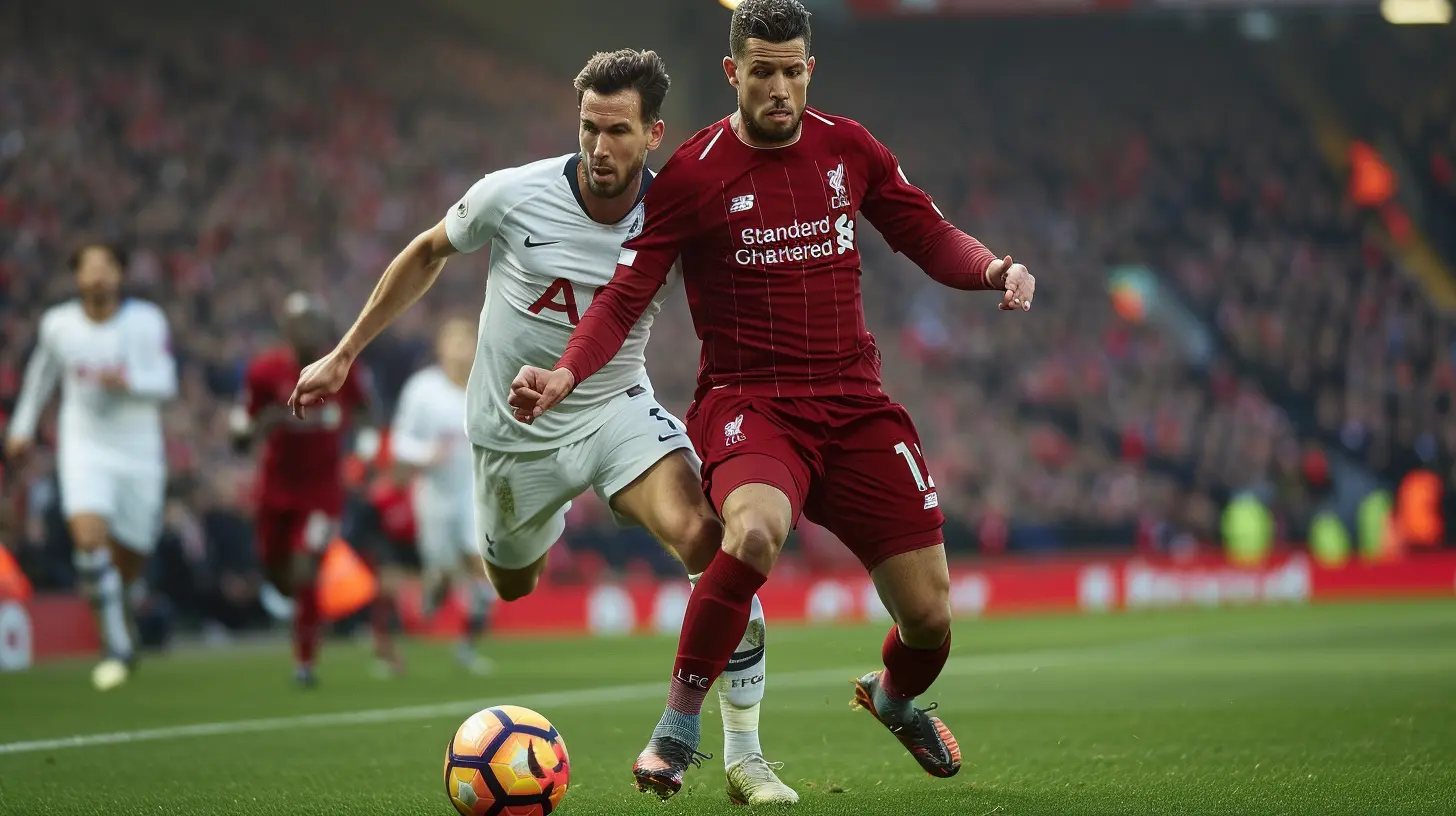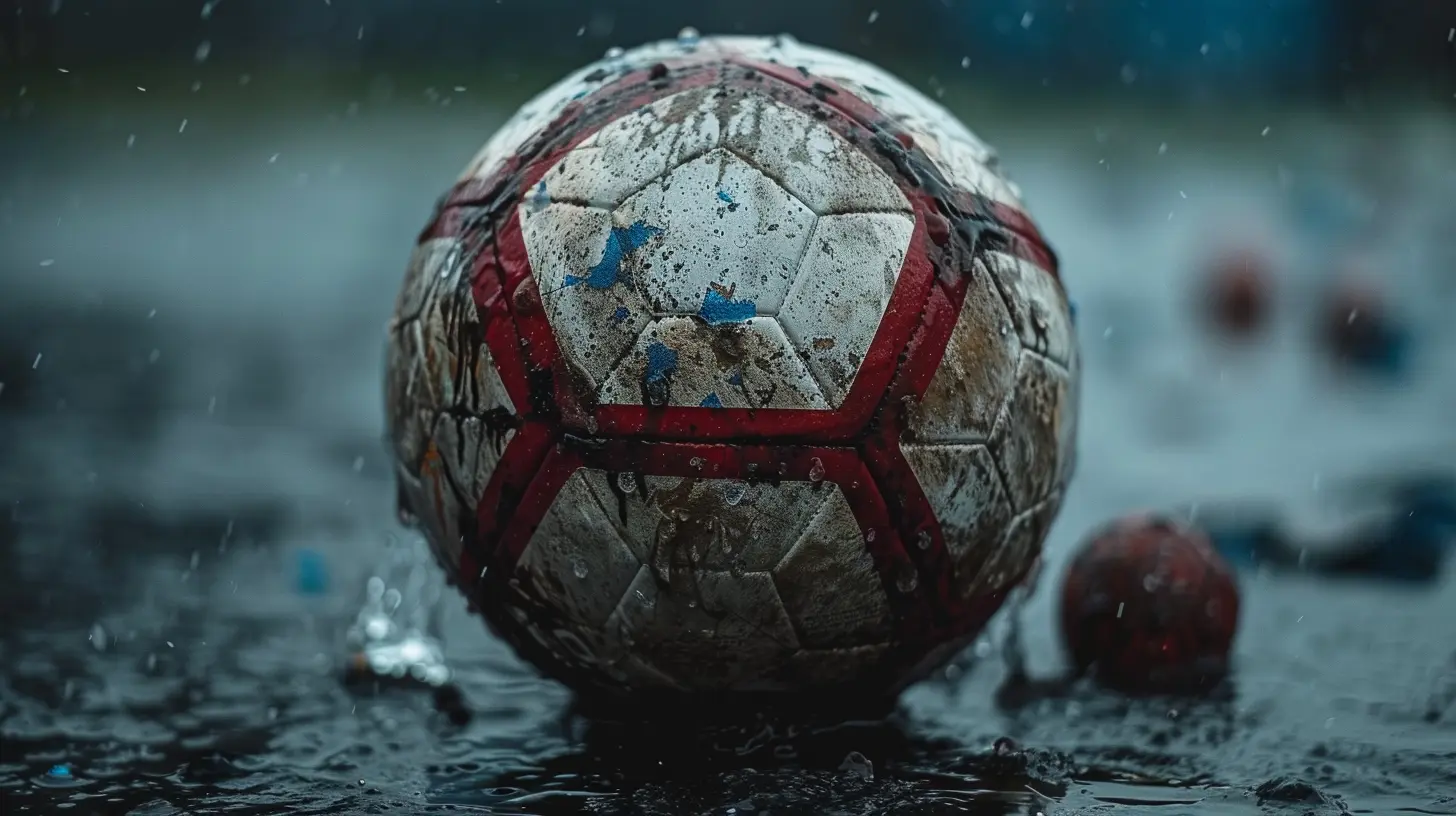Dominating Possession: How Ball Control Won the Day
13 October 2025
Ah, possession—the holy grail of modern football strategy, the thing every coach talks about like it’s the secret to eternal youth. You've probably heard it a hundred times: “We controlled the game,” “We dominated possession,” “It was all about ball control.” And you know what? They're not wrong. But let’s zoom in a bit and see exactly how ball control went from being just another stat on a spreadsheet to the kingmaker in the world of football.
Spoiler alert: It’s a lot more than just passing the ball around like you're avoiding a game of hot potato.
Possession: More Than Just a Fancy Word for "We Had the Ball"
Let’s be honest—saying your team dominated possession sounds so much cooler than saying “we ran around a lot and hoped for the best.” Possession is like the polished, suave cousin at the family reunion, while long ball tactics are the scruffy relative who shows up in flip-flops. Everyone respects possession—they might not always love it, but they respect it.At its core, dominating possession is about control, rhythm, and—let’s not sugarcoat it—psychological warfare. Because when your team has the ball 65% of the time, what you’re really saying is, “Hey, other team, have fun chasing shadows for 90 minutes.”
The Power of Patience – AKA the Pep Guardiola Method
You know the one. Pass, pass, pass, pass again. The ball zips around so much it starts to feel like you’re playing FIFA on cheat mode. This style isn’t just for show; it’s a tactical masterclass in wearing down the opposition mentally and physically.Guardiola turned possession into an art form. It’s not about just keeping the ball for the sake of it—it’s about calculated movement, positional play, and dragging defenders out of position like a magician pulling rabbits from hats.
This strategy forces the opposing team to make constant decisions under pressure, and more often than not, they get it wrong. When they do, boom—there’s that opening for goal.
The Science Behind the Stat Sheet
Let’s crunch some delicious numbers. Teams with 60%+ possession are statistically more likely to create goal-scoring opportunities, have fewer defensive errors, and dominate territory. It’s like playing a game of chess where your opponent can only move pawns.Sure, possession doesn't guarantee a win (shoutout to every team that lost 1-0 with 70% possession), but it drastically tilts the odds in your favor. You control the pace, you dictate the tempo, and you get to say when and how the game unfolds.
Is that not the literal definition of domination?
It’s Not Just About Offense—Defense Wins Too
Here’s the kicker: dominating possession isn’t always about scoring 17 goals. It’s also one of the best defensive strategies in the game. Think about it—if you have the ball, the other team can’t score. Brilliant, right?It’s like locking your valuables in a safe and then swallowing the key. You’re not just protecting a lead; you’re neutralizing the other team’s attack by starving them of the ball.
Teams like Spain during their 2008-2012 golden era turned this into a masterclass. Not only did they control the ball with surgical precision, they made it look like the opponent needed a permission slip just to cross midfield.
Midfield: The Engine Room of Ball Control
If possession is the art, then your midfielders are the paintbrush. Forget flashy strikers and gravity-defying saves—if you want to dominate ball possession, you need midfield maestros pulling the strings.Players like Xavi, Modrić, De Bruyne—they’re not just athletes; they’re conductors of a footballing symphony. They read the game like a spy novel, always three steps ahead, making sure the tempo never drops.
The midfield is where matches are won and lost. A strong midfield doesn’t just control the ball; it smothers the opponent's rhythm like a wet blanket on a campfire.
Possession Play vs Parking the Bus
Ah, the eternal battle—ball control vs ultra-defensive tactics. Possession is all about proactive control. Parking the bus? That’s reactive survival. It’s like the difference between hosting a dinner party and hiding in your kitchen because you're afraid your guests might ask for seconds.Now don’t get us wrong—there’s a time and place for shuffling ten men behind the ball. But let’s face it, it’s not pretty, it’s not fun, and nobody’s buying that jersey after the match.
Domination through possession says, “We’re here to play.” Parking the bus says, “Please don’t score on us.”
Why Ball Control Drives Fans Bonkers (In a Good Way)
Sure, there’s always that one guy in the stands shouting, “Forward! Pass it forward!” But deep down, even he knows the beauty of a well-orchestrated passing sequence.It’s like a magic trick unfolding in slow motion—every pass, every turn, calculated with surgical precision. Fans love control because it shows competence. It’s the footballing equivalent of watching an expert chef prepare a Michelin-star meal instead of a microwave dinner.
And when that patience finally pays off with a goal? Oh baby, the stadium erupts like a volcano. That slow burn intensity feeds into an explosive payoff.
The Psychology of Making the Other Team Suffer
Let’s be real—part of the joy in dominating possession is watching the other team slowly crumble. You can see their frustration in every mistimed tackle, every desperate clearance, every heavy breath.They’re running, you’re passing. They’re guessing, you’re dictating. It gets into their heads. They start second-guessing everything. Eventually, they panic—and that’s when mistakes happen. And what follows mistakes? Goals, baby.
Possession isn’t just a tactic; it’s a mind game with boots on.
The Risk Factor – When Possession Goes South
Okay, okay—let’s not act like keeping the ball guarantees a spot on Mount Olympus. There’s a fine line between ball control and ball obsession.Some teams hold the ball for eternity without ever doing anything useful with it. That’s when possession turns into a bad Tinder date—lots of enthusiasm, zero end product.
And when that one rogue pass gets intercepted? Welcome to counterattack city, population: you.
Possession is only powerful when paired with purpose. Otherwise, you’re just entertaining the crowd with an endless game of “tag-you’re-it.”
Teams That Nailed It (And Made the Rest of Us Jealous)
Let’s give props where it’s due. Some teams didn’t just dominate possession—they did it so well they made it fashionable.- Barcelona (2008–2012): The tiki-taka era. Basically a masterclass in short passes, movement, and midfield wizardry. Opponents looked like extras in a movie they didn’t audition for.
- Spain (Euro 2008 – World Cup 2010 – Euro 2012): A golden run built almost entirely on ball control. They squeezed the life out of the opposition like a boa constrictor with a La Liga jersey.
- Manchester City (Current Era): Pep 2.0. Same philosophy, more depth, and a high press that turns mistakes into highlight reels.
These teams didn’t just win—they suffocated their opponents with style.
Why Possession is the Future (And Why It’s Already the Present)
In a world where data is king and analysts pore over every pass like it's a precious gem, possession has cemented itself as the cornerstone of elite football strategy.Modern teams are built from the midfield out, valuing intelligence over brute force, technique over tactics straight out of the Stone Age.
Possession is no longer a luxury; it’s a necessity. You want to win consistently? You better know how to move the ball like it’s a hot coal—and you’re a barefoot magician.
So, How Exactly Did Ball Control Win the Day?
Let’s bring it home.Ball control won the day not just because it’s pretty or popular, but because it works. It chokes the opposition’s opportunities, maximizes your own, and defines every aspect of the game—from tempo to territory, from strategy to psychology.
When a team dominates possession, they’re not just playing football—they’re rewriting the rules. They're asserting dominance without saying a word. It’s the beautiful game at its most elegant and effective.
So the next time your team strings together 20+ passes and you hear groans in the crowd, just smile. That’s not boring football. That’s tactical brilliance in motion—and it just might win you the game.
And if they shout “Just boot it long!”... Well, maybe they’re better off watching rugby.
Final Whistle Thoughts
Possession isn’t just a stat on the match summary—it’s the heartbeat of modern football. When done right, it's graceful, powerful, and ruthlessly efficient. It weaves together tempo, space, and cunning into one seamless strategy that frustrates opponents and delights fans.So whether you're on the pitch or an armchair tactician screaming at your screen, remember this: ball control didn’t just influence the game—it straight-up owned it.
all images in this post were generated using AI tools
Category:
Match HighlightsAuthor:

Nelson Bryant
Discussion
rate this article
1 comments
Vienna Becker
Mastering ball control not only dictates the game's tempo but also demoralizes opponents. This strategic dominance transforms possession into a formidable weapon, demonstrating that the beauty of football lies in both skill and strategy.
October 23, 2025 at 12:24 PM

Nelson Bryant
Absolutely! Mastering ball control is crucial for dictating play and undermining opponents, showcasing the elegant interplay of skill and strategy in football.


